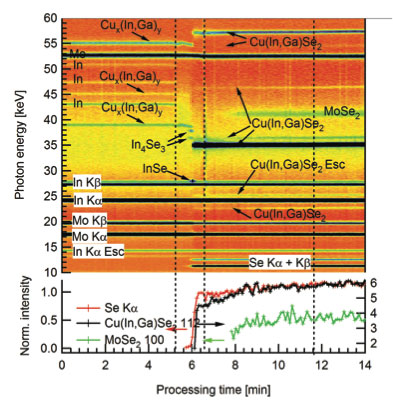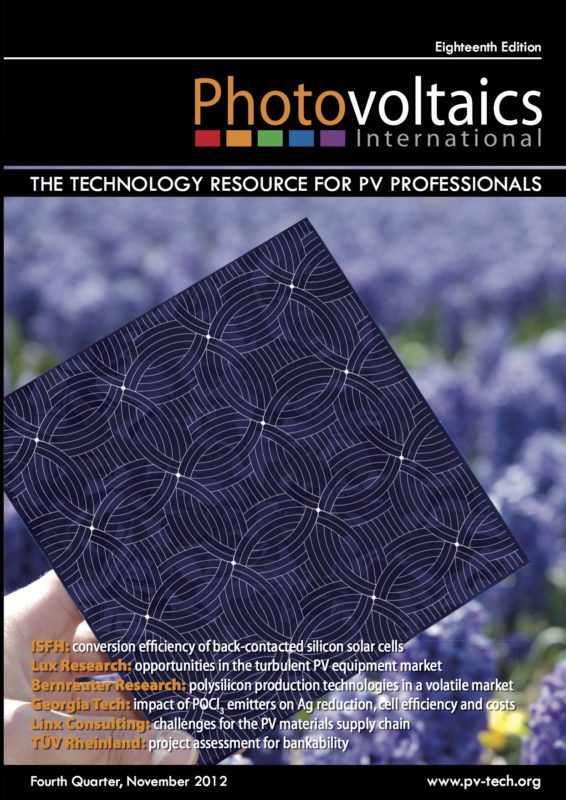By Niklas Papathanasiou, Head of CIGS Solar Cell Development, Helmholtz-Zentrum Berlin für Materialien und Energie GmbH/PVcomB
Since the demonstration of the first CuInSe2 solar cell in 1974 by scientists at Bell Laboratories, a lot of effort has been put into the development of cost-effective processes for highly efficient Cu(In,Ga)(Se,S)2 – or CIGS – solar cell devices. In 2012 these efforts led to the first gigawatt CIGS solar module production facility operated by Solar Frontier, a company that has a long history in R&D and originates from ARCO Solar, who developed the first commercial CIGS solar modules at the beginning of the 1990s. However, several start-up companies employing CIGS technology are presently struggling in the currently harsh market environment. Even though world-record laboratory solar cells now demonstrate 20.3% efficiency using a three-stage co-evaporation process, and full-size modules achieve 14.6% employing a similar method, efforts in research and development are more important than ever in order to increase cell efficiency, to bridge the gap between cell and module efficiencies, and to develop cost-effective and robust manufacturing processes. This paper gives an overview of current research topics under investigation by research institutes and industry, with a main focus on CIGS absorber formation. Along with other research results published by groups all over the world, this paper covers recent research results obtained at the Helmholtz-Zentrum Berlin für Materialien und Energie (HZB) and briefly mentions the work of the Photovoltaic Competence Center Berlin (PVcomB), a joint initiative of the Technical University of Berlin (TU Berlin) and HZB.



